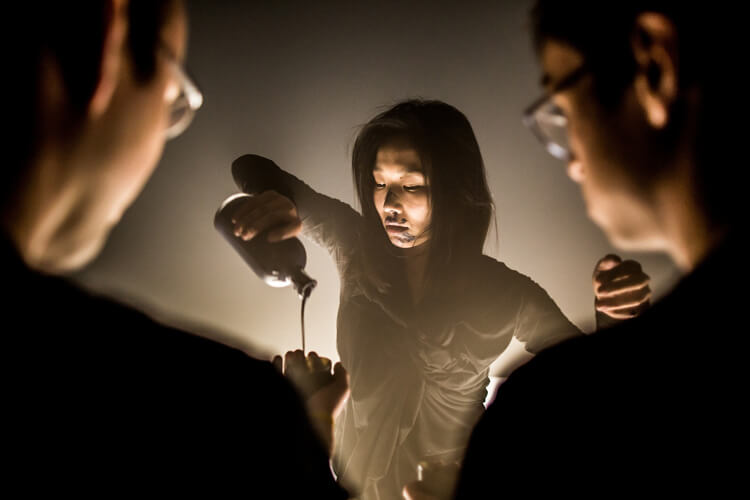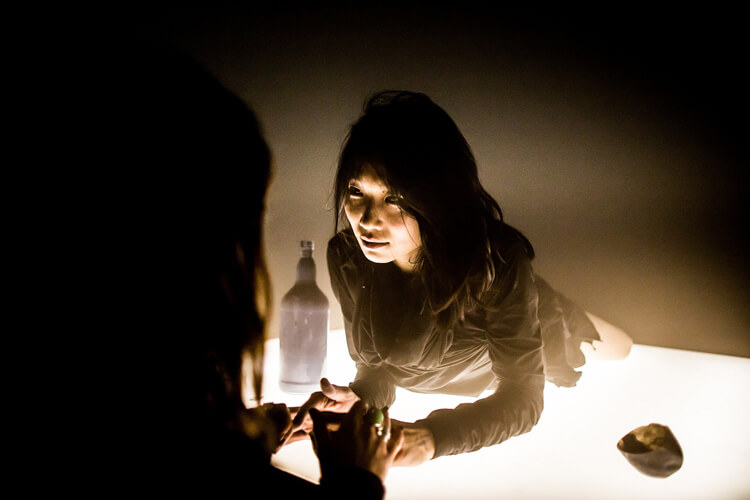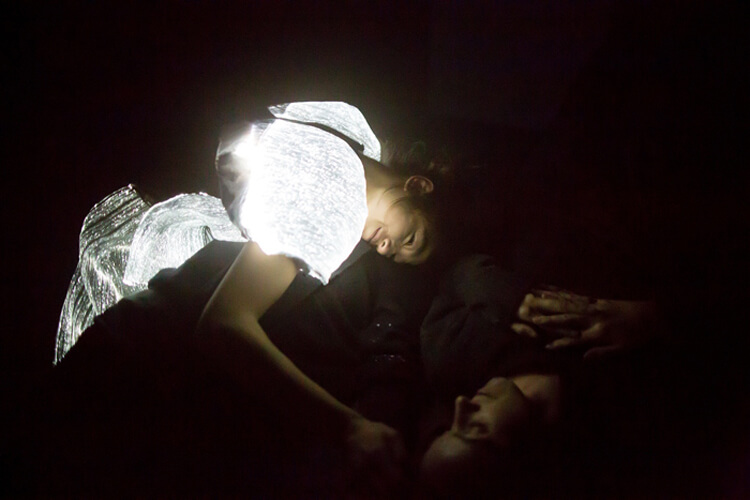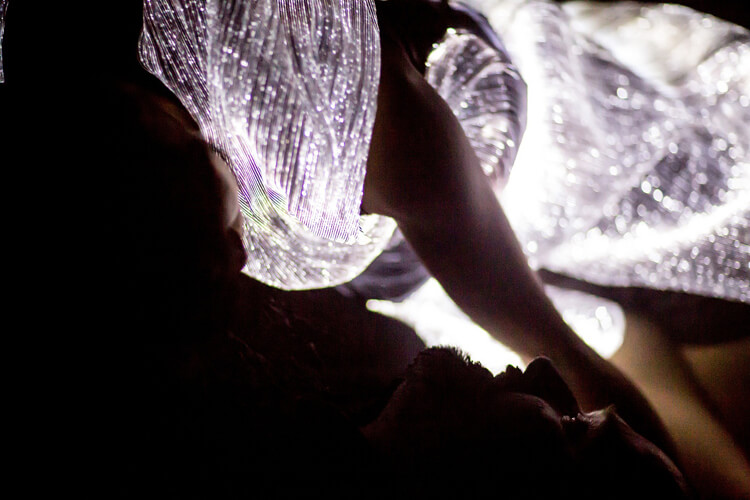Words by Meritxell Rosell

The Waldorf Project’s Chapter 3/FUTURO ended last week after 27 sold-out performances. For those that have been lucky to attend this intense, immersive, and boundary-pushing performance, it’s an experience that is not easy to forget. And I’m not going to reveal much about it, as it’s worth leaving part of the mystery in which it was shrouded.
The Waldorf Project was created and directed by Sean Rogg, an artist working in the field of video, photography, and performance. Rogg started the project in 2012, and it was incepted to run over a number of episodes over several years. Chapter One/MUSKMELON and Chapter Two/COLOUR have already been completed. One of the key aspects of the project is that it evolves through the course of its instalments.
Chapter 1 saw a more familiar, restaurant-style set-up which maybe didn’t reflect the immersive nature of the show. In Chapter 2, inspired by colour, Rogg tackled the immersive aspect more directly by staging separate rooms, each an individual environment addressing all five senses. This year’s Chapter 3/FUTURO was inspired by the prefabricated flying saucer-shaped house “Futuro” designed by Matti Suuronen in the late 1960s with a vision of a utopian society.
At its core, The Waldorf Project is an exploration through all the senses where art is consumed (never more literally) as a means and medium. Central to this concept is the synergy between the various aspects of the event (art, gastronomy, performance, couture, sound, and light) and the creativity of a very tight team. For these performances, everything is staged in infinite detail.
The piece combines the remarkable performers (Yen-Ching Lin, Mami Izumi, Chihiro Kawasaki and Ichi Go) and choreography to the sound of Alessio Natalizia (aka Not Waving, and one of Oscar Powell’s Diagonal crew – if you haven’t listened to his latest album it comes highly recommended) and costume design by Central St. Martins MA graduated fashion designer and art director Elena Martin, whose light pieces for the last performance were otherworldly.
Amidst feelings of disorientation and disconcert (unfamiliar smells, textures, tastes, shapes, spaces…) and a sense of lost personal identity, The Waldorf Project is a ritualistic passage to enjoy on one’s own but at the same time to share a confined close moment with people you don’t know. A post-humanist tale about human dominance – but maybe, even if it is difficult to image, it’s not that dark at the end of the tunnel.


The Waldorf Project is all about senses, feeling and experiencing, and at the same time, there is a fair amount of research and experimentation behind, quite scientific in a way; how did the fascination with these two (one could say quite opposed) concepts come about?
There is a huge amount of research and experimentation involved in creating this project. We even go to the trouble of staging a complete “test” performance a year before we stage the real performance to see which way to take the ideas. But I don’t see it as opposed. All my ideas come instinctively, and R&D is the best way to flesh out all the complex concepts.
The Waldorf Project is an immersive experience in which art is consumed through all of the senses; do you intend to bring about a synesthetic experience to your audiences? And what do you expect from the viewer/participant that interacts with your pieces?
Synaesthesia has definitely been a by-product of what I am exploring but not something that I have specifically gone out to achieve. I am looking beyond multi-sensory. I am looking at the sixth sense of “Emotion”- something that can only truly happen when the other five senses are synergized.
At the conceptual level, the different chapters of Waldorf’s projects take on posthumanist themes like the synergy of man and nature and dystopian futures. Could you tell us a bit about the intellectual process behind this?
The Project is constantly evolving. The title is supposed to give a hint at what the concepts might be about, but really it’s a very small hint. The title for Chapter Three, “Futuro”, reveals nothing of the dystopic hell-ride the guests go on nor the utopic conclusion it’s meant to prepare you for. I think of the emotional abstract journey I want to explore first and then find a way to communicate a taste of what to expect.
Do other of your personal projects root themselves in this sort of multi-sensorial environment? And where do you see yourself taking your work?
I have had no other projects since starting WP five years ago. It’s pretty overwhelming and takes up every ounce of my energy. I want to continue with the Project til I feel I have no more ideas I want to explore, but I see at least six chapters, with work on Chapter Four to begin shortly.
What is your chief enemy of creativity?
It’s hard to get into the zone, and it can come at any time. The smallest little thing can inspire me, but I have to say the primary preventer of zone “entry” has been female distraction!
You couldn’t live without…
Female distraction.






